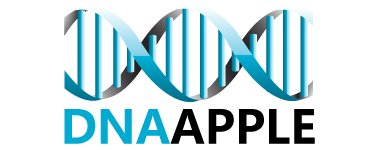Ancestry DNA Testing Gives Highly Accurate Geographical Origins

Living DNA
October 18, 2019Knowing our Ancestry

Knowing our ancestry gives us a sense of identity that helps define who we are. This is an important part of being human. Fortunately, with recent advances in genetic science, some questions about a person's ancestry can be answered and getting ancestry DNA testing is not only becoming more popular, it is also more affordable.
Over the past few years DNA testing has come to the point where those who want their DNA tested will submit a sample and the lab can analyze that DNA to determine the maternal line and the paternal line of that person. The maternal line is determined by looking at something in the cells called mitochondrial DNA and the paternal line is determined by looking at specific Y chromosome markers. These are parts of human DNA that changed as people moved out of Africa, becoming unique for each population.
Some people might have their DNA tested and find out they have a specific marker known as Haplogroup R1b, which is most common to Western Europe. However, this does not mean their ancestry stems from Western Europe because there is also a small population of men in North Africa who have this marker. Just because someone has markers that point toward Norway or Sweden does not mean that they are descended from the Vikings. The problem is that many of the companies that offer ancestry DNA testing do not tell their customers about all these subtleties.
Now the most recent advancements in genetic science might enhance the accuracy of tests done to determine ancestry. While testing the Y chromosome and the mitochondrial DNA only uses short sequences of the total DNA and they only test one strand of a person's DNA, analyzing the entire human genome would give a much more complete picture, but it is also much more complicated. In each successive generation entire stretches of chromosomes are rearranged, making it difficult to match them up. However, DNA mapping has brought researchers to the point where they can map the ancestry of certain populations, including that of Europe. To do this they have examined literally hundreds of thousands of letter changes across genomes of certain populations.
As scientists become able to delve deeper into the human genome, when giving out analysis it is important that they do so with a cautionary measure, much as they should do now. They need to tell the people whose DNA they are analyzing that there is limit to what they can determine from the analysis. For instance, soon scientists might be able to give an estimate as to when different populations interbred, but there are assumptions that must be made when doing the calculations. Information such as this needs to be passed on to the customer. However, with advancements like this the future of ancestry DNA testing is very bright indeed.

